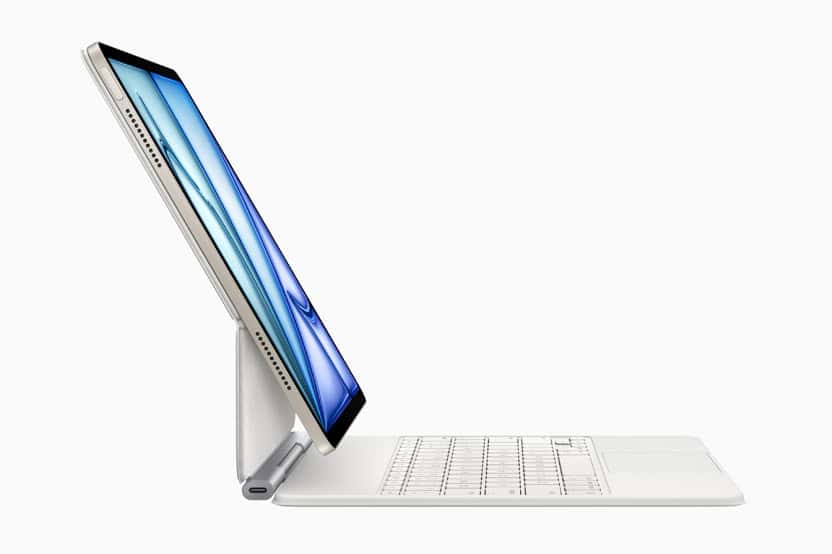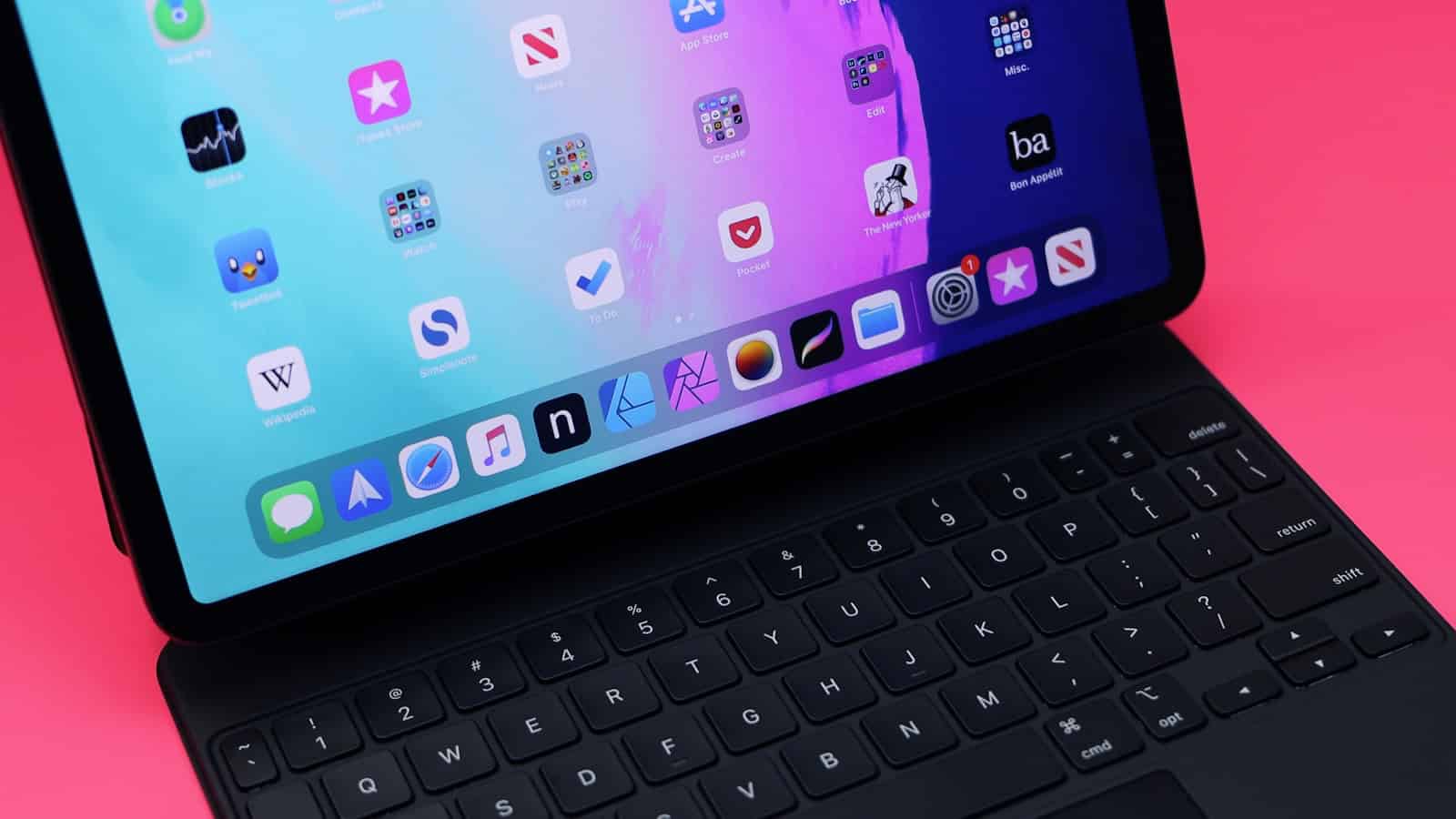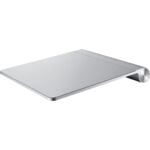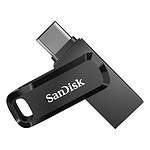Is your iPad keyboard giving you trouble? You’re not alone. Many iPad users face keyboard issues, whether it’s an on-screen keyboard that won’t appear or a Smart Keyboard that suddenly stops responding. Restarting your iPad and cleaning the Smart Connector can fix most iPad keyboard problems in minutes without needing technical help.
When your iPad keyboard stops working, it disrupts your workflow and can be very frustrating. The good news is that most keyboard issues have simple fixes. Sometimes the problem is with the software, while other times it might be dirt or debris blocking the connection between your iPad and keyboard.
Before spending money on a new keyboard or taking your iPad to a repair shop, try some basic troubleshooting steps. For on-screen keyboard issues, check your settings or deactivate any external keyboard that might be interfering. For Smart Keyboards or Magic Keyboards, try disconnecting and reconnecting them to your iPad.

Steps To Fix An iPad Keyboard That Is Not Working
If your iPad keyboard isn’t working—whether it’s the on-screen keyboard, a Bluetooth keyboard, or Apple’s Magic Keyboard—don’t panic. This guide walks you through step-by-step solutions to get your typing back on track.
1. Determine the Type of Keyboard You’re Using
Start by identifying the type of keyboard that’s causing the issue:
- On-screen keyboard (virtual keyboard)
- Smart Keyboard or Magic Keyboard (Apple’s physical accessories)
- Bluetooth keyboard (third-party or Apple)
Each one has different fixes, so narrowing it down is key.
2. Fixing the On-Screen Keyboard
If the iPad’s software keyboard isn’t showing or responding:
✅ Check Keyboard Settings
- Go to Settings > General > Keyboard
- Make sure “Show Keyboard” is enabled.
- If using an external keyboard, unplug/disconnect it and see if the on-screen keyboard reappears.
✅ Restart Your iPad
A simple reboot clears many temporary glitches:
- Press and hold the Power + Volume button until the power slider appears.
- Slide to power off, then turn it back on.
✅ Turn Off External Keyboard
If your iPad thinks a keyboard is connected:
- Go to Settings > Bluetooth
- Disable Bluetooth temporarily or unpair the keyboard.
✅ Reset Keyboard Dictionary
- Go to Settings > General > Transfer or Reset iPad > Reset > Reset Keyboard Dictionary
3. Fixing Apple Smart Keyboard or Magic Keyboard
✅ Check the Connection
- Remove and reattach the keyboard to the iPad.
- Ensure the Smart Connector (three dots on the iPad and keyboard) is clean and aligned.
✅ Update iPadOS
- Go to Settings > General > Software Update and install any available updates.
- Compatibility or bug fixes may be included in updates.
✅ Clean the Smart Connector
- Use a soft, dry cloth to gently clean the contacts on the back of your iPad and on the keyboard.
✅ Try a Different App
Sometimes the keyboard might only fail in specific apps. Try Notes or Safari to test functionality.
4. Fixing a Bluetooth Keyboard
✅ Reconnect the Device
- Go to Settings > Bluetooth
- Find the keyboard under “My Devices” and tap Forget This Device
- Then re-pair it by putting the keyboard in pairing mode and selecting it when it appears again.
✅ Replace Batteries or Charge
- For battery-powered keyboards, check and replace the batteries.
- For rechargeable ones, plug them in and wait a few minutes.
✅ Toggle Bluetooth Off and On
- Turn off Bluetooth for 10 seconds, then turn it back on.
5. Additional Troubleshooting Tips
| Step | Description |
|---|---|
| 🔁 Force Restart | Press Power + Home (or Power + Volume Up) until you see the Apple logo |
| 👤 Try Another User Profile | If available, try typing with a different Apple ID or guest session |
| ⚙️ Reset All Settings | Go to Settings > General > Reset > Reset All Settings (Doesn’t delete data, but resets preferences) |
6. When to Contact Apple Support
If none of the above steps work, your keyboard might be faulty or your iPad’s connector port could be damaged.
- Visit Apple’s Support Website
- Schedule an appointment at an Apple Store or authorized service provider
Key Takeaways
- Restart your iPad and clean the Smart Connector to fix most keyboard connection issues.
- Check your iPad settings to make sure the on-screen keyboard is enabled when using it.
- For Smart Keyboards that stop working, try remagnetizing the connector prongs with a household magnet.
Troubleshooting Basics
When your iPad keyboard stops working, a few simple checks can often solve the problem quickly. These basic troubleshooting steps help identify whether the issue is related to connection problems, physical damage, or compatibility issues.
Check Your Keyboard’s Connection
If your iPad keyboard isn’t responding, first check the connection. For Smart Connector keyboards like the Apple Magic Keyboard, ensure the connector pins are properly aligned with your iPad.
Try these quick fixes:
- Disconnect and reconnect your keyboard
- Clean the Smart Connector with a soft, lint-free cloth
- Restart your iPad by holding the power button, then sliding to power off
- For wireless keyboards, check the battery level
- Turn Bluetooth off and on again in Settings
Sometimes dust or debris blocks the connection. Gently clean both the Smart Connector on your iPad and the connecting points on your keyboard.
For Bluetooth keyboards, try unpairing and repairing the device. Go to Settings > Bluetooth, tap the “i” icon next to your keyboard, select “Forget This Device,” then reconnect.
Inspect for Hardware Damage
Physical damage can prevent your iPad keyboard from working properly. Check for visible signs of damage on both the keyboard and connection points.
Look for:
- Broken or stuck keys
- Liquid damage (discoloration, corrosion)
- Bent connector pins
- Frayed cables (for wired keyboards)
- Damaged hinges on folio-style keyboards
Test individual keys to see if specific areas aren’t working. If you have an Apple Magic Keyboard with trackpad, check if the trackpad works even when keys don’t. This helps determine if the issue affects the entire keyboard or just parts of it.
For Magic Keyboards with intermittent issues, try remagnetizing the connector. Some users report success by gently passing a magnet over the Smart Connector area.
If you notice physical damage, contact Apple Support or visit an Apple Store for repair options.
Ensure Compatibility
Not all keyboards work with every iPad model. Compatibility issues are common when keyboards stop working after iOS updates or when using third-party options.
Check these compatibility factors:
- iPad model: Make sure your keyboard is designed for your specific iPad model
- iOS version: Update to the latest iPadOS version, as keyboard issues are often fixed in updates
- Third-party compatibility: Some third-party keyboards may need app updates to work with newer iOS versions
For Apple keyboards, visit the Apple website to confirm compatibility with your iPad model. The Smart Connector design has changed across iPad generations, so older keyboards might not fit newer models.
If using a Bluetooth keyboard, verify it supports iOS devices. Some PC keyboards have limited functionality when paired with iPads.
Software Fixes
When your iPad keyboard stops working, software issues are often the culprit. Simple fixes like restarting your device or updating the system can solve many keyboard problems without needing technical help.
Restart Your iPad
A quick restart can fix many temporary iPad keyboard issues. This simple step clears the memory and refreshes all running processes.
- Press and hold the top button and either volume button until the power slider appears
- Drag the slider and wait 30 seconds for your device to turn off
- Press and hold the top button until you see the Apple logo
For iPad models with a Home button, press and hold the top button until the slider appears. If you’re using an external keyboard like a Smart Keyboard, disconnect it completely before restarting your iPad.
After the restart, reconnect your keyboard and test if it works.
Update iPadOS
Outdated operating systems often cause keyboard problems. Apple regularly releases updates that fix bugs and improve keyboard performance.
To update your iPadOS:
- Connect your iPad to Wi-Fi
- Go to Settings > General > Software Update
- If an update is available, tap Download and Install
- Enter your passcode if prompted
Make sure your iPad has enough battery or connect it to a power source during the update. Updates can take several minutes to complete.
Some keyboard issues are directly linked to software compatibility problems that get fixed in newer iPadOS versions.
Reset Keyboard Settings
If your keyboard still isn’t working properly, resetting the keyboard settings might help.
To reset keyboard settings:
- Go to Settings > General > Reset (or Transfer or Reset iPad on newer versions)
- Select Reset Keyboard Dictionary
- Enter your passcode when prompted
- Confirm by tapping Reset Dictionary
This removes any custom words you’ve added to your dictionary but doesn’t delete any other data. For more stubborn issues, you might need to reset all settings on your iPad.
Your keyboard settings will return to their factory defaults, which often resolves persistent keyboard issues.
Advanced Solutions
If basic fixes don’t solve your iPad keyboard problems, it’s time to try more powerful methods. These solutions require more steps but often fix deeper system issues that cause keyboard malfunctions.
Perform a Forced Restart
A forced restart can clear temporary software glitches that regular restarts might miss. This process won’t delete your data but refreshes the system memory.
For iPad models with a Home button, press and hold both the Home and Top buttons at the same time. Keep holding them until you see the Apple logo appear on the screen.
For iPad models without a Home button (like newer iPad Pro), press and quickly release the Volume Up button. Then press and quickly release the Volume Down button. Finally, press and hold the Top button until your iPad restarts.
Wait for your iPad to complete the restart process. This usually takes about a minute. After it’s back on, test your keyboard to see if it’s working properly.
Reset All Settings on iPad
When keyboard problems persist, resetting all settings might help. This option keeps your data intact but returns all settings to factory defaults.
To do this, go to Settings > General > Reset All Settings. You’ll need to enter your passcode. Tap “Reset All Settings” to confirm.
This reset affects Wi-Fi passwords, VPN settings, keyboard dictionary, and display settings. After the reset, you’ll need to reconnect to Wi-Fi networks and reconfigure some preferences.
The iPad will restart during this process. When it’s complete, test your keyboard to see if the issue is resolved. Many keyboard problems vanish after this reset because it clears corrupted settings.
Use iOS System Recovery Tools
For serious keyboard issues, third-party iOS system recovery tools can fix problems at the operating system level.
Popular options include TunesKit iOS System Recovery, iMyFone Fixppo, and Dr.Fone. These tools can repair system files without data loss in standard repair mode.
To use these tools:
- Download and install the recovery software on your computer
- Connect your iPad to the computer with a cable
- Launch the program and select the system repair option
- Follow the on-screen instructions to put your device in recovery mode
- Let the program download firmware and fix your iPad
These tools work by reinstalling system files that might be corrupted while preserving your personal data. They’re especially helpful when keyboard issues stem from failed iOS updates or system corruption.
Seeking Professional Help
Sometimes iPad keyboard issues go beyond simple fixes. When your troubleshooting efforts don’t solve the problem, getting expert assistance can save time and frustration.
Contact Apple Support
If your iPad keyboard still isn’t working after trying basic solutions, Apple Support can provide specialized help. You can reach them in several ways:
- Through the Apple Support website
- Via the Apple Support app on another device
- By calling their phone support line
- In person at an Apple Store through a Genius Bar appointment
Apple experts can diagnose whether your issue is hardware or software related. For Smart Keyboard problems, they can check the connector pins and iPad ports for damage.
Bring your iPad, keyboard, and proof of purchase to your appointment. If your device is under warranty or AppleCare+, repairs might be covered at no cost. Even with older devices, Apple technicians can offer the most reliable assessment of keyboard connectivity issues.
Consult with JustAnswer Experts
JustAnswer provides a convenient alternative when you need quick expert advice. This online service connects you with certified Apple technicians who can help troubleshoot your iPad keyboard problems remotely.
JustAnswer experts are available 24/7, making them ideal for urgent issues. You can upload photos of your keyboard setup to help them better understand your specific problem.
The service uses a question-and-answer format where you describe your issue in detail. Experts typically respond within minutes with customized solutions based on your iPad model and keyboard type.
JustAnswer costs less than most in-person repair appointments. They offer various payment options including one-time fees or membership plans for ongoing support. Their experts can often guide you through fixes you might have overlooked.
Frequently Asked Questions
iPad keyboard issues are common and usually have simple fixes. Most problems can be solved with basic troubleshooting steps like cleaning connections or restarting devices.
How can I troubleshoot my iPad Smart Keyboard when it’s not working?
Start by checking the Smart Connector on both your iPad and keyboard. These metal dots can collect dust and dirt.
Clean the Smart Connector with a soft, lint-free cloth to remove any debris. Even small amounts of dirt can block the connection.
Try to restart your iPad by turning it off and on again. This simple step often fixes many connection problems.
What steps can I take if my iPad keyboard is not responding to touch inputs?
Check if the onscreen keyboard is activated in Settings. Sometimes it gets disabled when using external keyboards.
If you’re using an external keyboard, try disconnecting it completely before using the touch keyboard again.
Restart your iPad by holding the power button until the slide to power off appears. After turning it off, wait 30 seconds before turning it back on.
What should I do if my Magic Keyboard is not functioning with my iPad Pro?
First, try a simple restart of both devices. Turn off your iPad and keyboard, then turn them back on.
Check the battery level of your Magic Keyboard. If the battery is low, charge it using the USB-C port on the keyboard.
Try turning Bluetooth off and on again. Go to Settings > Bluetooth, toggle it off, wait 10 seconds, then turn it back on.
How do I resolve the ‘accessory not supported’ message for my iPad keyboard?
This error often means there’s a compatibility issue between your iPad model and keyboard. Check Apple’s website to confirm they work together.
Try restarting both devices to clear any temporary software glitches.
Make sure your iPad’s software is up to date. Go to Settings > General > Software Update to check for any available updates.
Why is my iPad keyboard not working properly after a recent software update?
Software updates can sometimes cause unexpected issues with accessories. Wait a day or two as Apple often releases quick fixes.
Reset your iPad’s keyboard settings by going to Settings > General > Reset > Reset Keyboard Dictionary.
If problems continue, back up your data and consider restoring your iPad to factory settings as a last resort.
What are the solutions when certain keys on the Magic Keyboard do not type letters?
First, test your keyboard to check which specific keys aren’t working. Open Notes app and try each key.
Clean under the problematic keys gently with compressed air. Dust and debris often collect under keys and cause them to stick.
If cleaning doesn’t help, the keyboard might have physical damage and need repair. Contact Apple Support or visit an Apple Store for professional assistance.







